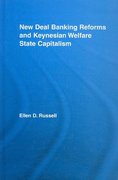Question
Determine the reasons why factor prices do not equalise in the Heckscher-Ohlin factor price equalisation theorem. For this question, the following is my answer, do
Determine the reasons why factor prices do not equalise in the Heckscher-Ohlin factor price equalisation theorem.
For this question, the following is my answer, do let me know if I missed anything or any parts are wrong. Thank you
Introduction:
Factor intensities are used in macro economics of factors of production such as labor, capital, land, natural resources etc.
Explanation: The Hecksher-Ohlin theorem assumes that factors of production are different for different commodities but these are same for all countries. The factor reversal intensities can be explained by elasticity of substitution. The difference in elasticity of substitution of L and K is greater in the production of two commodities. for example, two commodities are steel and cloth. The elasticity of substitution in labor with capital is very less in production of steel. If the factor-intensity reversal exists then the H-O theory breaks down. because country A would export cloth and its labour-intensive product. country B also exports cloth which is its capital-intensive product. by this the two countries cannot export the same product to each other. by this the H-O theory is not valid.
Factor intensities are used in macro economics of factors of production such as labor, capital, land, natural resources etc. The Hecksher-Ohlin theorem assumes that factors of production are different for different commodities but these are same for all countries. The factor reversal intensities can be explained by elasticity of substitution. The difference in elasticity of substitution of L and K is greater in the production of two commodities. for example, two commodities are steel and cloth. The elasticity of substitution in labor with capital is very less in production of steel. If the factor-intensity reversal exists then the H-O theory breaks down. because country A would export cloth and its labour-intensive product. country B also exports cloth which is its capital-intensive product.
According to the factor-price equalization theorem, whenever the prices of output commodities are equalized among nations, such as when nations transition to free trade, the costs of the factors of production (capital and labor) would also be equal among nations, which suggests that free trade would then equitably distribute wage rates as well as capital rents across the globe. The theorem is built on the assumptions that the two nations use the same manufacturing technology and also that their markets are perfectly competitive.
Factors are rewarded in a perfectly competitive market depending on the value of their marginal productivity, that is determined by the output price of the product. As a result, when price levels vary among nations, so do their marginal productivity, and thus their wage rates and rents. Nevertheless, when the price of products are evened up, as in free trade, the value of marginal products is also equalized among nations, and thus the nations must start sharing the same pay rates and rental rates. In practice, factor-price equalization is unlikely to work perfectly. So as to concentrate on the impacts of multiple factor endowments, the H-O model presumes that technology is the same across nations. If manufacturing technologies vary across nations, factor prices will not equalize when prices of commodities equalize. Once free trade in outputs is allowed, output prices in the 2 nations will be the same. Because both nations have the same marginal productivity relationships, only one set of wage and rental rates can gratify these relationships for a provided set of output price levels. As a consequence of free trade, the prices of commodities, as well as wage and rental rates, will be equalized. Since both countries are having the same wage and rental rates, they will produce each commodity with the same capital-labor ratio. However, because the nations continue to have varying levels of factor endowment, they will generate varying amounts of the two commodities. It is hard to tell whether production systems are dissimilar, similar, or the same in the real world. With the same manufacturing technology, one could make the argument that cutting-edge capital can be transferred anywhere in the globe. On the other hand, one could argue that just because the machinery is the same doesn't mean the laborers will keep operating it in the same way. Disparities in organizational capabilities, workers behaviors, and motivating factors are likely to persist indefinitely.
For factor prices to equalize: tastes, or the rate of consumption for goods should be consistent, if the supply environments of the factors vary between countries, there should be no qualitative differences between them which suggests that the level of technological advancement in each country should be the same, every commodity's production function should be the same in each country and has a simple aspect, - i.e., either it's capital-intensive or labor-intensive. In other words, commodity production functions allow for only a limited amount of factor substitutions, duties and taxes should not be used to restrict trade in the trading nations and there should be no transport costs. The above conditions can't be met in the real world and thus factor prices can't equalize in the Heckscher-Ohlin factor price equalization theorem.
Conclusion: by this the two countries cannot export the same product to each other. by this the H-O theory is not valid.
Step by Step Solution
There are 3 Steps involved in it
Step: 1

Get Instant Access to Expert-Tailored Solutions
See step-by-step solutions with expert insights and AI powered tools for academic success
Step: 2

Step: 3

Ace Your Homework with AI
Get the answers you need in no time with our AI-driven, step-by-step assistance
Get Started


